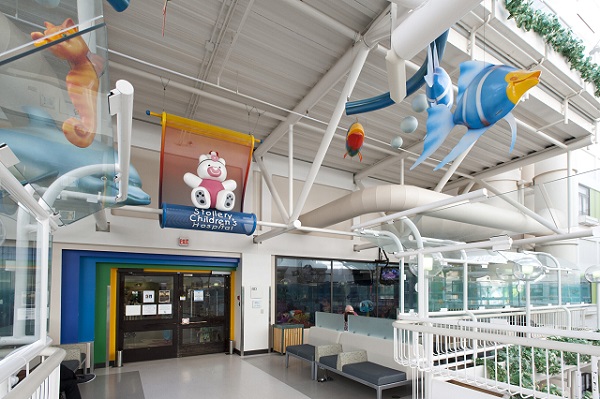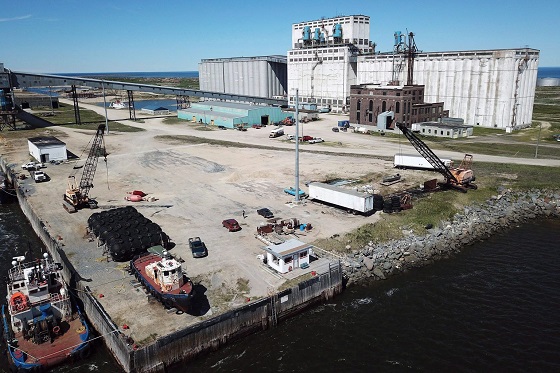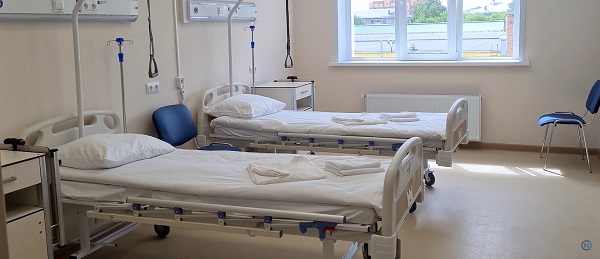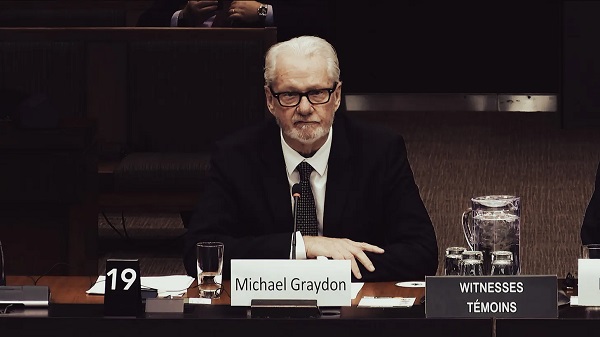Alberta
Province advancing plans to build stand-alone Stollery Children’s Hospital

Investing in a new Stollery Children’s Hospital |
If passed, Budget 2024 will allocate $20 million over three years to advance plans for a stand-alone Stollery Children’s Hospital in Edmonton.
With 236 beds, the Stollery Children’s Hospital is the second-largest children’s hospital in Canada and has among the highest inpatient volumes of any children’s hospital in Canada. As the province’s population continues to grow, it is crucial that children in Edmonton and northern Alberta have access to the specialized care they need.
Alberta’s government is steadfast in its commitment to build a stand-alone Stollery Children’s Hospital. A new facility would provide more beds, larger clinical spaces, more private rooms and dedicated areas for children and their families. It would also result in additional teaching spaces and state-of-the-art technologies to enhance health care delivery specifically for children.
“A new, stand-alone children’s hospital will build capacity and enable health care providers to continue delivering world-class care to children. This investment, as well as other capital investments outlined in Budget 2024, is an example of how we are creating a more unified and efficient health care system for Albertans. I look forward to sharing more details soon.”
“The new Stollery Children’s Hospital project is the latest addition to Edmonton’s health care infrastructure. Building upon the successes of recent projects like the new emergency department at the Misericordia Community Hospital and Norwood West at the Gene Zwozdesky Centre, the new Stollery will help increase health care capacity in the capital region.”
Alberta’s government initially invested in the project in 2021, providing $1 million that was matched by the Stollery Children’s Hospital Foundation. The proposed investment in Budget 2024 will include $17 million in new funding, following the $3 million invested through last year’s budget, for a total investment of $21 million in government funding over four years.
The investment in a new stand-alone Stollery Children’s Hospital is not only important for families in the city of Edmonton and capital region, it is important for families living across northern Alberta. The Stollery Children’s Hospital serves families in a geographical area of more than 500,000 square kilometres, stretching from Red Deer to Alberta’s northernmost border with the Northwest Territories. Almost 40 per cent of inpatients at the Stollery come from outside the Edmonton area and the hospital is the closest and primary children’s hospital for residents of the Northwest Territories.
“The Stollery has an incredible reputation for the impact it makes in the community, and especially in northern Alberta. This stand-alone Stollery Children’s Hospital is a long-awaited, necessary project that will help provide additional health care services to children and their families when they need it the most.”
“This remarkable investment will take us one step closer to our goal of building a reimagined Stollery Children’s Hospital for the future. A new Stollery is poised to provide the most innovative, modern and family-centred physical and mental health care to help bring hope and comfort to kids dealing with serious illness and injury. Thank you to the Government of Alberta for recognizing the very real need for this hospital.”
“A new Stollery Children’s Hospital is urgently needed to provide dedicated care for our children. By separating kids from adults, a stand-alone Stollery ensures a nurturing environment and the most modern pediatric equipment and resources to offer families like ours a health care space designed exclusively for our children.”
Plans for the new hospital include integrating mental health resources, virtual care, research and training facilities to better support patients and improve health outcomes. There will also be a focus on ensuring health care providers, parents and caregivers have the resources they need to support patients.
Alberta’s government remains dedicated to expanding and modernizing hospitals and facilities to provide Albertans with high-quality health care while increasing system capacity and supporting front-line health care workers.
“Alberta’s government is committed to building a stand-alone Stollery Children’s Hospital when planning is complete. A new facility would provide more beds, larger clinical spaces, more private rooms and dedicated areas for children and their families. There would also be more teaching spaces and state-of-the-art technologies to enhance health care delivery.”
Quick facts
- Established in 2001, the Stollery Children’s Hospital is a full-service pediatric hospital and centre for complex pediatric care and research.
- The Stollery Children’s Hospital sees about 300,000 children, 55,000 emergency room visits and 12,000 surgeries annually.
Related news
Alberta
Alberta bill would protect freedom of expression for doctors, nurses, other professionals

From LifeSiteNews
‘Peterson’s law,’ named for Canadian psychologist Jordan Peterson, was introduced by Alberta Premier Danielle Smith.
Alberta’s Conservative government introduced a new law that will set “clear expectations” for professional regulatory bodies to respect freedom of speech on social media and online for doctors, nurses, engineers, and other professionals.
The new law, named “Peterson’s law” after Canadian psychologist Jordan Peterson, who was canceled by his regulatory body, was introduced Thursday by Alberta Premier Danielle Smith.
“Professionals should never fear losing their license or career because of a social media post, an interview, or a personal opinion expressed on their own time,” Smith said in a press release sent to media and LifeSiteNews.
“Alberta’s government is restoring fairness and neutrality so regulators focus on competence and ethics, not policing beliefs. Every Albertan has the right to speak freely without ideological enforcement or intimidation, and this legislation makes that protection real.”
The law, known as Bill 13, the Regulated Professions Neutrality Act, will “set clear expectations for professional regulatory bodies to ensure professionals’ right to free expression is protected.”
According to the government, the new law will “Limit professional regulatory bodies from disciplining professionals for expressive off-duty conduct, except in specific circumstances such as threats of physical violence or a criminal conviction.”
It will also restrict mandatory training “unrelated to competence or ethics, such as diversity, equity, and inclusion training.”
Bill 13, once it becomes law, which is all but guaranteed as Smith’s United Conservative Party (UCP) holds a majority, will also “create principles of neutrality that prohibit professional regulatory bodies from assigning value, blame or different treatment to individuals based on personally held views or political beliefs.”
As reported by LifeSiteNews, Peterson has been embattled with the College of Psychologists of Ontario (CPO) after it mandated he undergo social media “training” to keep his license following posts he made on X, formerly Twitter, criticizing Trudeau and LGBT activists.
He recently noted how the CPO offered him a deal to “be bought,” in which the legal fees owed to them after losing his court challenge could be waived but only if he agreed to quit his job as a psychologist.
Early this year, LifeSiteNews reported that the CPO had selected Peterson’s “re-education coach” for having publicly opposed the LGBT agenda.
The Alberta government directly referenced Peterson’s (who is from Alberta originally) plight with the CPO, noting “the disciplinary proceedings against Dr. Jordan Peterson by the College of Psychologists of Ontario, demonstrate how regulatory bodies can extend their reach into personal expression rather than professional competence.”
“Similar cases involving nurses, engineers and other professionals revealed a growing pattern: individuals facing investigations, penalties or compulsory ideological training for off-duty expressive conduct. These incidents became a catalyst, confirming the need for clear legislative boundaries that protect free expression while preserving professional standards.”
Alberta Minister of Justice and Attorney General Mickey Amery said regarding Bill 13 that the new law makes that protection of professionals “real and holds professional regulatory bodies to a clear standard.”
Last year, Peterson formally announced his departure from Canada in favor of moving to the United States, saying his birth nation has become a “totalitarian hell hole.”
Alberta
‘Weird and wonderful’ wells are boosting oil production in Alberta and Saskatchewan

From the Canadian Energy Centre
Multilateral designs lift more energy with a smaller environmental footprint
A “weird and wonderful” drilling innovation in Alberta is helping producers tap more oil and gas at lower cost and with less environmental impact.
With names like fishbone, fan, comb-over and stingray, “multilateral” wells turn a single wellbore from the surface into multiple horizontal legs underground.
“They do look spectacular, and they are making quite a bit of money for small companies, so there’s a lot of interest from investors,” said Calin Dragoie, vice-president of geoscience with Calgary-based Chinook Consulting Services.
Dragoie, who has extensively studied the use of multilateral wells, said the technology takes horizontal drilling — which itself revolutionized oil and gas production — to the next level.
“It’s something that was not invented in Canada, but was perfected here. And it’s something that I think in the next few years will be exported as a technology to other parts of the world,” he said.
Dragoie’s research found that in 2015 less than 10 per cent of metres drilled in Western Canada came from multilateral wells. By last year, that share had climbed to nearly 60 per cent.
Royalty incentives in Alberta have accelerated the trend, and Saskatchewan has introduced similar policy.
Multilaterals first emerged alongside horizontal drilling in the late 1990s and early 2000s, Dragoie said. But today’s multilaterals are longer, more complex and more productive.
The main play is in Alberta’s Marten Hills region, where producers are using multilaterals to produce shallow heavy oil.
Today’s average multilateral has about 7.5 horizontal legs from a single surface location, up from four or six just a few years ago, Dragoie said.
One record-setting well in Alberta drilled by Tamarack Valley Energy in 2023 features 11 legs stretching two miles each, for a total subsurface reach of 33 kilometres — the longest well in Canada.
By accessing large volumes of oil and gas from a single surface pad, multilaterals reduce land impact by a factor of five to ten compared to conventional wells, he said.
The designs save money by skipping casing strings and cement in each leg, and production is amplified as a result of increased reservoir contact.
Here are examples of multilateral well design. Images courtesy Chinook Consulting Services.
Parallel
Fishbone
Fan
Waffle
Stingray
Frankenwells
-

 Energy2 days ago
Energy2 days agoExpanding Canadian energy production could help lower global emissions
-

 Business2 days ago
Business2 days agoWill the Port of Churchill ever cease to be a dream?
-

 COVID-191 day ago
COVID-191 day agoFreedom Convoy protestor Evan Blackman convicted at retrial even after original trial judge deemed him a “peacemaker”
-

 Daily Caller1 day ago
Daily Caller1 day agoTrump Gives Zelenskyy Until Thanksgiving To Agree On Peace Deal, With U.S. Weapons And Intel On The Line
-

 Daily Caller1 day ago
Daily Caller1 day agoBari Weiss Reportedly Planning To Blow Up Legacy Media Giant
-

 Business16 hours ago
Business16 hours agoI Was Hired To Root Out Bias At NIH. The Nation’s Health Research Agency Is Still Sick
-

 Business2 days ago
Business2 days agoThe numbers Canada uses to set policy don’t add up
-

 Business2 days ago
Business2 days agoNew airline compensation rules could threaten regional travel and push up ticket prices











